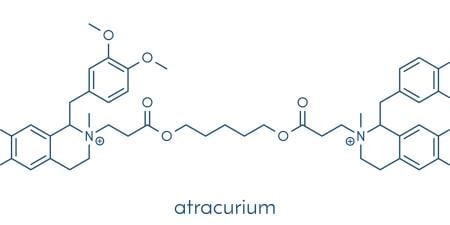Quality Improvement in Anesthesiology
Anesthesiology is the medical specialty that provides anesthesia during surgery and other invasive procedures, in critical care, and in management of acute and chronic pain. Through its core expertise of keeping patients safe and comfortable during invasive or painful procedures, anesthesiology enables the activities of every surgical discipline and an increasing percentage of nonsurgical specialties as well, including complex cardiac catheter-driven procedures. Like every specialty, the practice of anesthesiology is undergoing rapid change in the Information Age, which has presented the American Society of Anesthesiologists (ASA) with the need to create new mechanisms for continuous quality improvement. This essay explores the creation of the Anesthesia Patient Safety Foundation (APSF) in 1985, the creation of the Anesthesia Quality Institute (AQI) in 2008, and the subsequent progress that has resulted from the synergy between the two organizations.
The Anesthesia Patient Safety Foundation
Traditionally, anesthesiology has been associated with efforts to advance patient safety. This begins with the discovery and dissemination of general anesthesia itself. The paper reporting the first public demonstration of ether anesthesia was recently hailed by the New England Journal of Medicine as the most influential article of their 200-year history [1]. Harvey Cushing famously recorded outcomes of the anesthetics he performed as a medical student, and specialty pioneer Emory Rovenstine kept a punch-card file of the anesthetics he performed as chairman at the University of Wisconsin in the 1930s, decades before the invention of modern computers [2]. In 1954, Harvard anesthesiologists Henry Beecher and Donald Todd reported a landmark multiyear, multicenter study of perioperative mortality in university operating rooms, documenting a rate of anesthesia-related in-hospital mortality of 1 in 1,560 surgical cases [3]. This paper established a benchmark for reductions in anesthesia-related mortality in the modern era, and the authors’ call for safety improvements doubtless contributed to the development of patient physiologic monitors; introduction of newer, safer, and more specific medications; and a culture of self-reflection and continuous, evidence-based quality improvement.
In 1985, the Anesthesia Patient Safety Foundation (APSF) was established as “the first independent multidisciplinary organization (practitioners, equipment and drug manufacturers, and many related professionals) created expressly to help avoid preventable adverse clinical outcomes, especially those related to human error” [4]. The APSF mission statement “that no patient shall be harmed by anesthesia” perfectly captures their goal [5]. The APSF, which became a model for the National Patient Safety Foundation, brought together anesthesiologists, nurse anesthetists, pre- and postoperative nurses, equipment manufacturers, and human factors experts to collect and analyze data on critical incidents occurring during anesthesia and to develop equipment and drugs to improve patient safety. Since 1985, the APSF has funded safety research, published numerous educational materials, and worked with anesthesia equipment manufacturers to design safer machines, more intuitive monitors, and better pharmacologic agents.
The ASA Closed Claims Project
The Closed Claims Project (CCP), funded by the American Society of Anesthesiologists, was initiated in the 1980s to facilitate understanding of liability in anesthesia practice and to improve patient safety by working with malpractice insurance companies to review cases of adverse events that involved anesthesiologists [6]. Although the CCP cannot determine the rates at which adverse events occur (the denominators are unknown), it has provided the profession for years with a compendium of the worst outcomes that can occur in anesthesia cases. Cross-pollination of thinking and leadership between the CCP and the APSF has led to 20 years of safety improvement projects, including recent changes to anesthesia machine design, prevention of OR fires, and identification of risk factors for postoperative visual loss [7].
The Anesthesia Quality Institute
The rapid introduction of digital record-keeping into clinical anesthesia in the 2000s created new possibilities for improving care that coincided with increasing public and government interest in quantifying the performance of physicians. In 2008, the ASA House of Delegates approved the creation of a new, related organization, the Anesthesia Quality Institute (AQI), “to be the primary source of information for quality improvement in the clinical practice of anesthesiology” [8]. The initial AQI board of directors included academics and private practitioners and anesthesiologists with interest and experience in quality management and information technology. I was hired to direct the AQI in 2009 and now lead a staff of 15 scientists, technicians, and administrators as the chief quality officer. In 2013, the AQI became the centerpiece of the ASA’s Quality Division, which includes another half-dozen employees in the Departments of Quality and Regulatory Affairs, Health Policy Research, and Methodology.
The AQI launched its first “product” on January 1, 2010: the National Anesthesia Clinical Outcomes Registry (NACOR). From an initial cohort of six participating practices, NACOR now includes more than 22 million records from more than 30,000 anesthesia clinicians working in 3,000 ORs, ambulatory surgery centers, and other procedural environments. In 2015, NACOR will capture information from about 25 percent of all the anesthesia cases performed in the United States. NACOR is built on the universal availability of a core dataset of demographic and procedural information contained in electronic billing records, augmented when available by outcome measures and even complete electronic health record documentation from practices using Anesthesia Information Management Systems (AIMS) [9]. It anticipates the day when every vital sign, every procedure, and every dose of medication is automatically recorded.
The primary purpose of NACOR is to facilitate local quality improvement activities by showing anesthesia groups what they do and how well they do it. NACOR’s most important reports concern patient demographics and outcomes displayed as trends over time, which every group and clinician can use to improve performance. NACOR also provides groups with national and peer-group benchmarks that they can use to understand their strengths and weaknesses relative to those of other groups and facilities. National benchmarking can then identify both high and low outliers in performance, leading to study of the exceptional clinicians and “export” of their systems to others. The aggregate data in NACOR is useful not only for understanding local performance and enabling local quality improvement but also for academic study, informing ASA’s advocacy efforts and identifying gaps in knowledge that can be targeted with new educational products [10].
The Difference between Safety and Quality
The difference between the APSF and the AQI is the difference between safety and quality. One theory holds that safety is an infinite absolute: any complex process—such as delivery of anesthesia—can be made infinitely safer. A dose of an intravenous medication can be checked, rechecked, and re-rechecked, and each step will add a progressively smaller increment of safety. Quality improvement, on the other hand, takes into account the incremental cost of each change in practice and asks, “How much quality can we afford?”
Quality improvement, therefore, is the application of finite resources (people and time) to an infinite problem. Quality management begins with data collection and benchmarking to identify opportunities for improvement, and then addresses these opportunities in sequence from the most to the least significant. The ideal quality management program continuously improves patient safety by gathering data, identifying variance in practice, introducing change, and remeasuring. This cycle of continuous quality improvement leads to progressive, incremental advance in performance.
Collaboration and Interaction
Anesthesiology benefits from both the APSF and the AQI and from the interaction between them. The APSF continues to identify important concerns in the safe practice of anesthesia, and the AQI participates in its meetings and discussions. Furthermore, the ASA CCP is now a registry of the AQI, allowing extension of digital archiving and online data collection in accordance with data collection modules designed by the AQI. Finally, comparison of serious adverse outcomes in the CCP with patients at risk as defined in NACOR has provided the specialty with new understanding, as in a recent examination of claims related to massive hemorrhage compared to national statistics on the number of patients at risk in various surgical and procedural categories [11].
Beginning in 2015, the APSF and the AQI will combine to offer a fellowship in anesthesia patient safety, providing one year of funding to an anesthesiologist interested in the scientific study of risks and outcomes [12]. Fellowship awardees will learn the history and operations of each organization, attend national-level meetings, and use the available resources to complete a year-long safety improvement project in their home institutions. The intention of this fellowship is to develop the leaders of the next generation of anesthesia safety experts.
A related project, the Anesthesia Leadership Registry, is the AQI’s newest data collection program. This is a simple listing of anesthesiologists nationwide who are active outside of the OR, whether leading hospital units and committees, working for the pharmacology and device industries, or participating in federal regulatory efforts. Anesthesiologists play leadership roles in many aspects of modern health care; the AQI’s goal is to recognize those who do, celebrate their activities, and provide a platform for networking and mentorship. The AQI is working with other organizations, including the APSF, to populate this registry. The goal is to make anesthesiology the specialty for medical students interested in becoming the hospital and health care leaders of tomorrow.
Summary
Anesthesiology has historically promoted the continuous improvement of patient care through the identification of rare complications and serious adverse events, the systematized collection of data from routine care, educational products, and efforts to improve anesthesia equipment. Moreover, the APSF and the AQI have created a synergistic partnership for continuous quality improvement that combines both the micro and macro collection of self-reflective data and is a model for other specialties.
References
- Gawande A. Two hundred years of surgery. N Engl J Med. 2012;366(18):1716-1723.
- Ament R, Papper EM, Rovenstine EA. Cardiac arrest during anesthesia; a review of cases. Ann Surg. 1951;134(2):220-227.
- Beecher HK, Todd DP. A study of the deaths associated with anesthesia and surgery: based on a study of 599,548 anesthesias in ten institutions 1948-1952, inclusive. Ann Surg. 1954;140(1):2-35.
-
Anesthesia Patient Safety Foundation. About APSF: foundation history. http://apsf.org/about_history.php. Accessed December 14, 2014.
-
Anesthesia Patient Safety Foundation. About APSF: pioneering safety. http://www.apsf.org/about_safety.php. Accessed January 22, 2015.
-
Cheney FW. The American Society of Anesthesiologists Closed Claims Project: what have we learned, how has it affected practice, and how will it affect practice in the future? Anesthesiology. 1999;91(2):552-556.
- Lee LA, Roth S, Posner KL, et al. The American Society of Anesthesiologists Postoperative Visual Loss Registry: analysis of 93 spine surgery cases with postoperative visual loss. Anesthesiology. 2006;105(4):652-659.
-
Anesthesia Quality Institute. About us. http://www.aqihq.org/about-us.aspx. Accessed December 14, 2014.
- Grissom TE, DuKatz A, Kordylewski H, Dutton RP. Bring out your data: the evolution of the National Anesthesia Clinical Outcomes Registry. Int J Comput Models Algorithms Med. 2011;2(2):51-69.
- Dutton RP. Registries of the Anesthesia Quality Institute. Int Anesthesiol Clin. 2014;52(1):1-14.
- Dutton RP, Lee LA, Stephens LS, Posner KL, Davies JM, Domino KB. Massive hemorrhage: a report from the anesthesia Closed Claims Project. Anesthesiology. 2014;121(3):450-458.
-
Anesthesia Quality Institute. APSF/AQI Patient Safety Career Development and Research Award, 2015-2016. http://www.aqihq.org/apsf.aspx. Accessed December 20, 2014.



